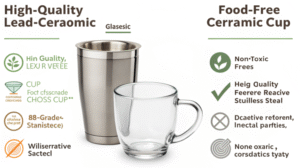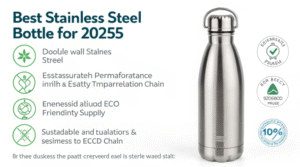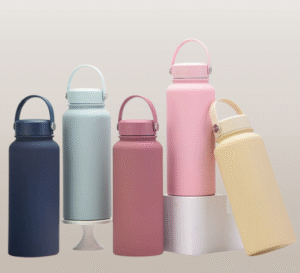You see beautiful, colored glass mugs trending on social media. But you hesitate, wondering if this trend has real market potential or if it's just another passing fad for your product line.
Yes, colored glass mugs are a significant trend. They appeal to modern consumers by combining minimalist aesthetics with a pop of color. Mugs made from solid colored glass or high-quality borosilicate glass are durable, safe, and highly photogenic.
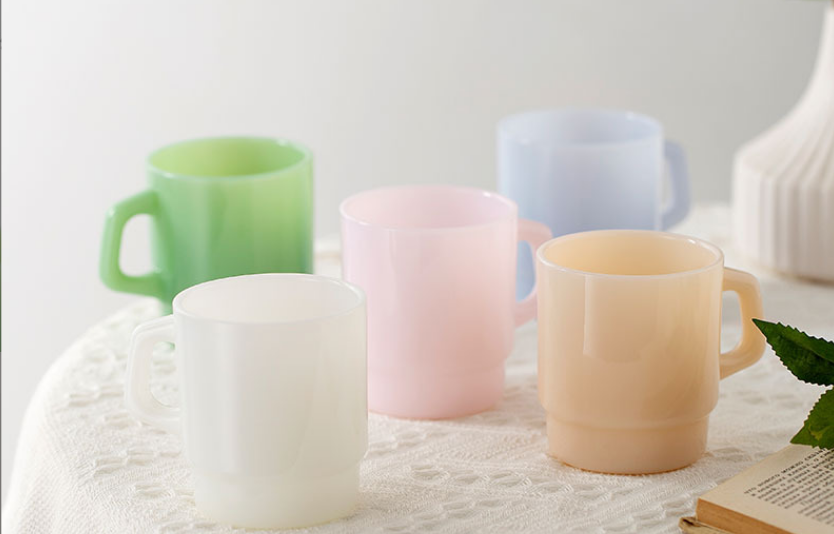
A few years ago, a client came to me with a folder full of Instagram screenshots. They were all of these elegant, colorful glass mugs. They wanted to create a line that felt just as sophisticated. It taught me a valuable lesson: these aren't just cups; they are aesthetic objects. For a product developer, this means you're not just selling drinkware; you're selling a piece of a lifestyle. Understanding this trend is key to creating a product that people don't just use, but proudly display.
What glass mugs do the Kardashians use?
You see influencers like the Kardashians setting trends. You want to tap into that style but are unsure what specific features make their drinkware choices so desirable and popular.
While their exact mugs change, influencers like the Kardashians popularize a specific style: minimalist, high-quality, often double-walled borosilicate glass mugs. These cups emphasize clarity, clean lines, and a high-end feel that showcases the beverage inside.
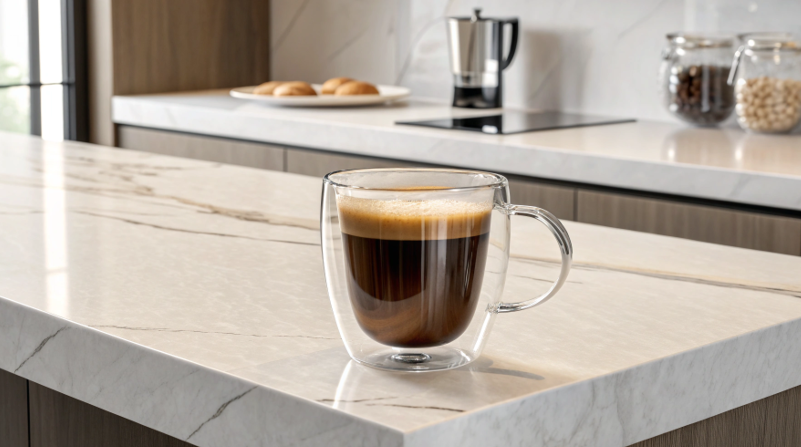
I worked with a brand that wanted to capture this "celebrity kitchen" aesthetic. We didn't focus on copying one specific mug. Instead, we analyzed the design language. It was all about what we called "visual lightness." We chose thin-walled borosilicate glass, used an almost invisible handle joint, and focused on perfect clarity. We learned that the appeal wasn't in a brand name, but in the feeling of sophisticated simplicity. For a developer like Emily, this means focusing on the design principles, not just the product itself.
Decoding the Influencer Aesthetic
The "Kardashian effect" isn't about a single product; it's about a collection of design attributes that signal luxury and modern taste.
- Material: The star is almost always borosilicate glass. This type of glass is known for its superior thermal resistance (safe for hot and cold) and its exceptional clarity. It can also be molded into thinner, more delicate shapes without sacrificing strength, which contributes to the high-end look.
- Design: The key features are:
- Double-Walled Construction: This is a very common choice. It creates a beautiful floating effect for the coffee and keeps the exterior cool to the touch.
- Minimalist Silhouette: Simple, geometric shapes like cylinders or clean curves are preferred over ornate designs.
- Subtle Handles: Handles are often delicate and cleanly integrated into the body of the mug.
- The Strategy for You: Don't try to make an exact copy. Instead, adopt these core principles. Focus on sourcing high-quality borosilicate glass. Design a mug with clean lines and consider a double-walled option. This approach allows you to create a product that feels current and luxurious, appealing to the same audience without being a direct imitation.
Are colored coffee mugs safe?
You love the look of colored glass, but a deep-seated worry about safety holds you back. You fear that the color could come from toxic paints or coatings that could harm your customers.
Yes, high-quality colored glass mugs are completely safe. This is because the color is integrated directly into the glass itself during manufacturing. This "solid colored glass" is inert, non-toxic, and will not leach chemicals, fade, or scratch off.
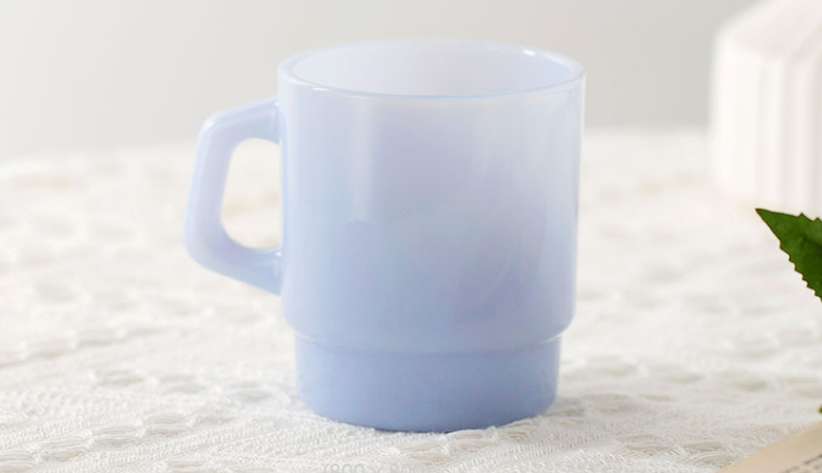
I will never forget a factory visit where I saw a batch of cheaply made "colored" glass bottles. I picked one up and was able to scratch the color off with my fingernail. It was just a spray-painted coating. We rejected the entire shipment immediately. This experience solidified my number one rule for colored glass: always verify the manufacturing method. True colored glass is safe because the color is part of its very structure. A cheap coating is a liability waiting to happen. Your job is to know the difference.
Sourcing Safe Colored Glassware
As a developer, ensuring safety is your top responsibility. Here is what you need to know.
There are two primary ways to color glass. Only one is ideal for premium drinkware.
| Method | Description | Safety & Quality |
|---|---|---|
| Solid Colored Glass | Metallic oxides (like cobalt for blue or gold for red) are mixed into the molten glass before it's formed. | The Gold Standard. The color is part of the glass itself. It's 100% food-safe, permanent, and dishwasher safe. |
| Spray Coating/Painting | A clear glass mug is manufactured and then a layer of colored paint or coating is applied to the exterior. | High Risk. The coating can chip, scratch, or peel, especially with heat and washing. It may contain unsafe chemicals. |
To ensure you are sourcing safe products, you must:
- Question Your Supplier: Directly ask about the manufacturing process. Use the terms "solid colored glass" versus "spray coated."
- Request Samples: Perform your own tests. Try to scratch the color. Run it through multiple dishwasher cycles.
- Demand Test Reports: Require third-party lab reports that certify the product is lead-free, cadmium-free, and food-safe. This non-negotiable step protects your customers and your brand.
Is glass or ceramic better for coffee?
You're trying to decide between glass and ceramic for your new coffee mug line. Each material has its fans, and you're struggling to determine which one offers a better overall experience.
Neither is definitively "better"; they offer different benefits. Glass is superior for purity of taste and visual appeal. Ceramic is superior for heat retention and a classic, cozy feel. The best choice depends on the user's priority.
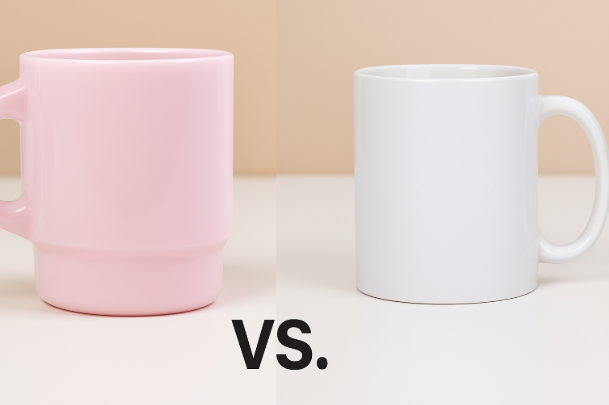
In my own kitchen, I use both. When I make a single-origin pour-over in the morning, I always reach for a clear glass mug. I want to see the rich color and taste the delicate flavor notes without any interference. But in the afternoon, when I want a coffee that will stay hot while I work, I grab my favorite thick-walled stoneware mug. As a developer, you shouldn't think of it as a competition. Instead, think of it as an opportunity to serve two different types of coffee drinkers, or two different coffee-drinking moments.
A Head-to-Head Comparison
Helping a client decide between materials is a core part of my job. Here's the breakdown I give them.
| Feature | Glass Mugs | Ceramic Mugs |
|---|---|---|
| Taste Purity | Winner. Glass is completely non-porous and inert. It will not absorb or impart any flavor. | Very good, but a poorly glazed ceramic could potentially allow for minor flavor absorption. |
| Heat Retention | Loser. Glass loses heat quickly. Double-walled glass is much better but still trails ceramic. | Winner. The thick walls of stoneware mugs are excellent insulators, keeping coffee hot longer. |
| Aesthetics | Visual. Allows you to see the coffee, crema, and layers of a latte. Modern and clean. | Tactile. Offers a feeling of warmth, weight, and tradition. Available in endless colors. |
| Durability | Prone to shattering on impact. Borosilicate glass is more durable and thermal-shock resistant. | Prone to chipping or cracking. High-quality stoneware and porcelain are very durable. |
| Best For | Coffee purists, latte art lovers, modern kitchens, and a "clean" brand aesthetic. | Slow sippers, creating a cozy brand feel, office environments, and durability in daily use. |
The best strategy is often to offer both. This allows you to meet the needs of every segment of the coffee-drinking market, from the taste-obsessed purist to the comfort-seeking daily drinker.
What color mug makes coffee taste better?
You're choosing the color palette for your new mug line. You wonder if this is just an aesthetic choice, or if the color of the mug itself can actually influence the user's perception of taste.
Psychologically, yes. Studies show mug color alters taste perception. White mugs can make coffee taste more bitter, while warm-colored mugs, like brown or red, can enhance perceptions of richness and sweetness.
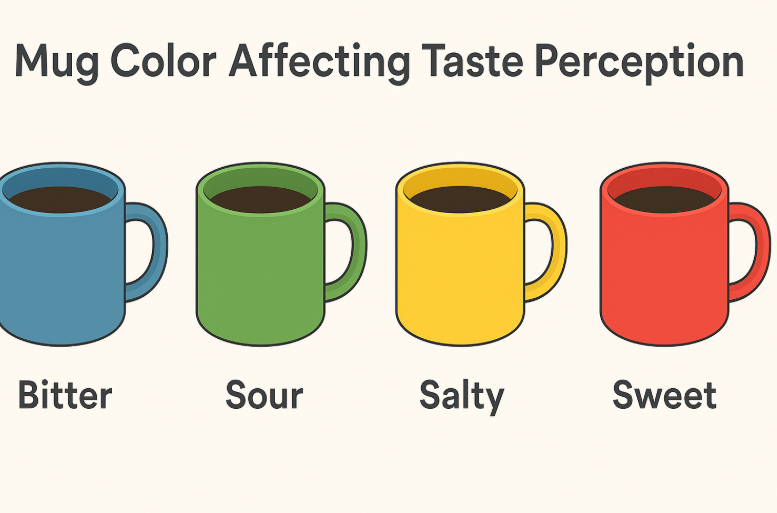
This is one of the most fascinating aspects of product development. I once worked with a coffee roaster who was launching a new "velvet smooth" blend. We prototyped mugs in different colors. In blind-ish tests, people consistently rated the coffee served in the deep amber glass mug as "smoother" and "richer" than the exact same coffee served in a stark white ceramic one. This is the power of sensory suggestion. The color sets an expectation in the brain, and the brain makes the taste conform to that expectation.
The Psychology of Drinkware Color
This isn't just a theory; it's a known psychological phenomenon called sensory cross-modal correspondence. As a product developer, you can use it to your advantage.
- The Science: Our brains are wired to create associations. We associate certain colors with certain flavors based on a lifetime of experience.
- White: Provides high contrast, making the coffee appear darker. This can unconsciously signal "strong" or "bitter" to the brain.
- Brown/Red/Amber: These colors are associated with richness, sweetness, and warmth. They can subconsciously prime the drinker to expect a smoother, less intense flavor.
- Blue/Green: These are less common for coffee and can create a disconnect, sometimes leading to a less favorable taste perception.
- Strategic Application for a Developer (Emily):
- Match Color to Flavor Profile: If you are co-branding with a coffee company, choose a mug color that complements their coffee's tasting notes. Choose amber for a "caramel" blend or deep red for a "cherry notes" blend.
- Define the Experience: Use color to guide the user's experience. Are you selling a powerful, intense morning brew? A white mug might work. Are you selling a comforting, mellow afternoon drink? A warmer tone would be better.
By understanding this psychology, you move from simply choosing a color to strategically designing an enhanced taste experience.
Conclusion
Colored glass mugs are a safe, growing trend. By choosing high-quality borosilicate or solid colored glass, you can create a beautiful, modern product line that appeals to today's aesthetically-driven consumer.

